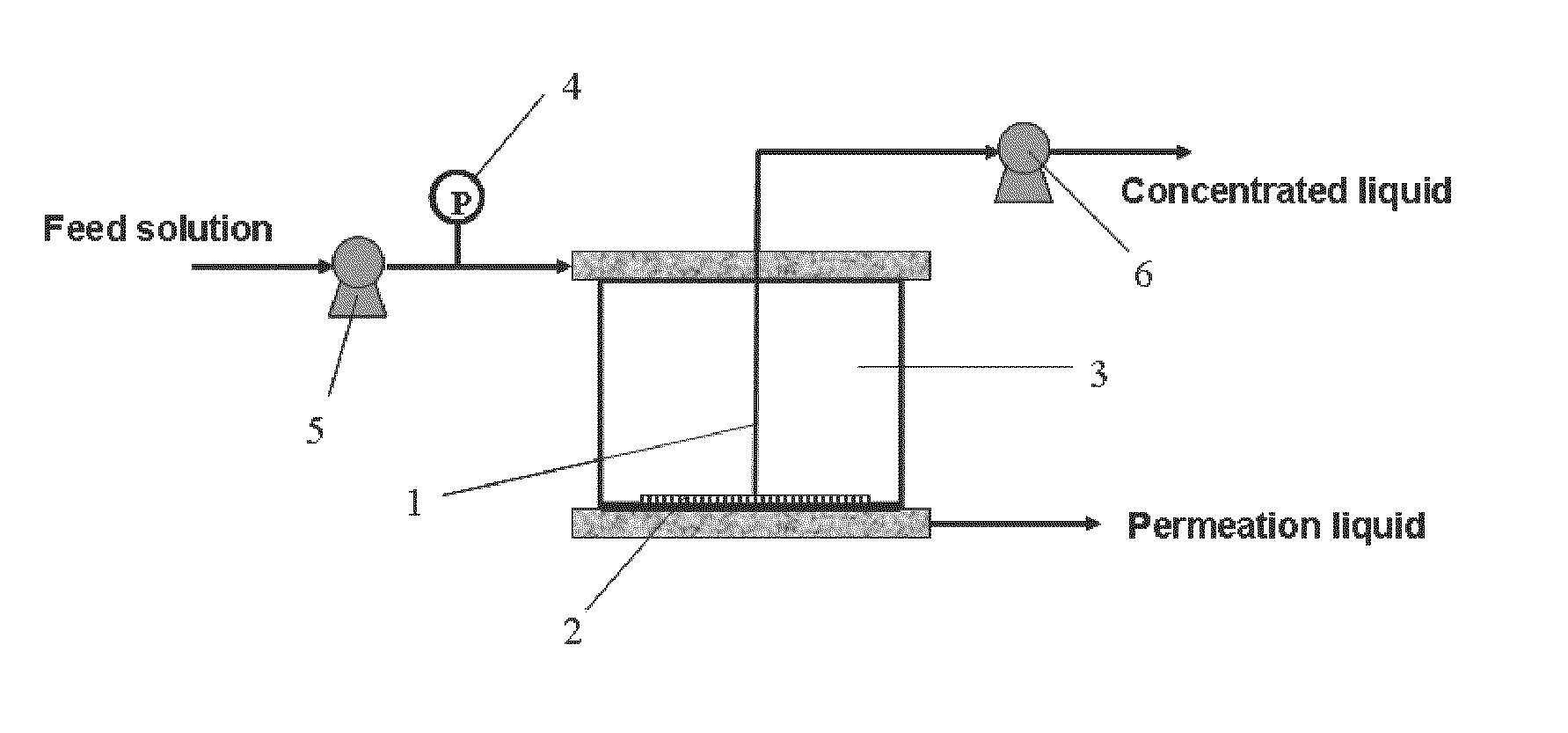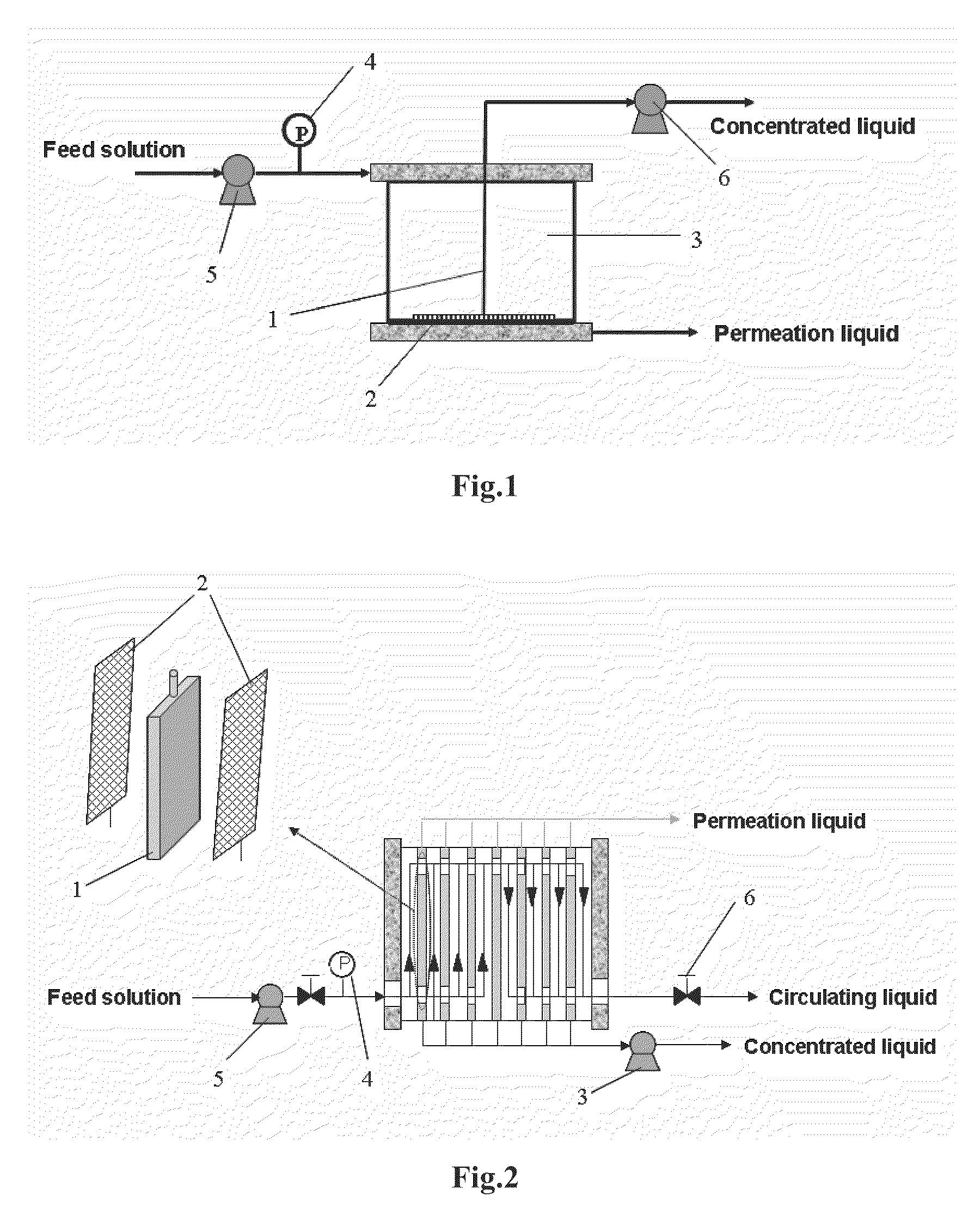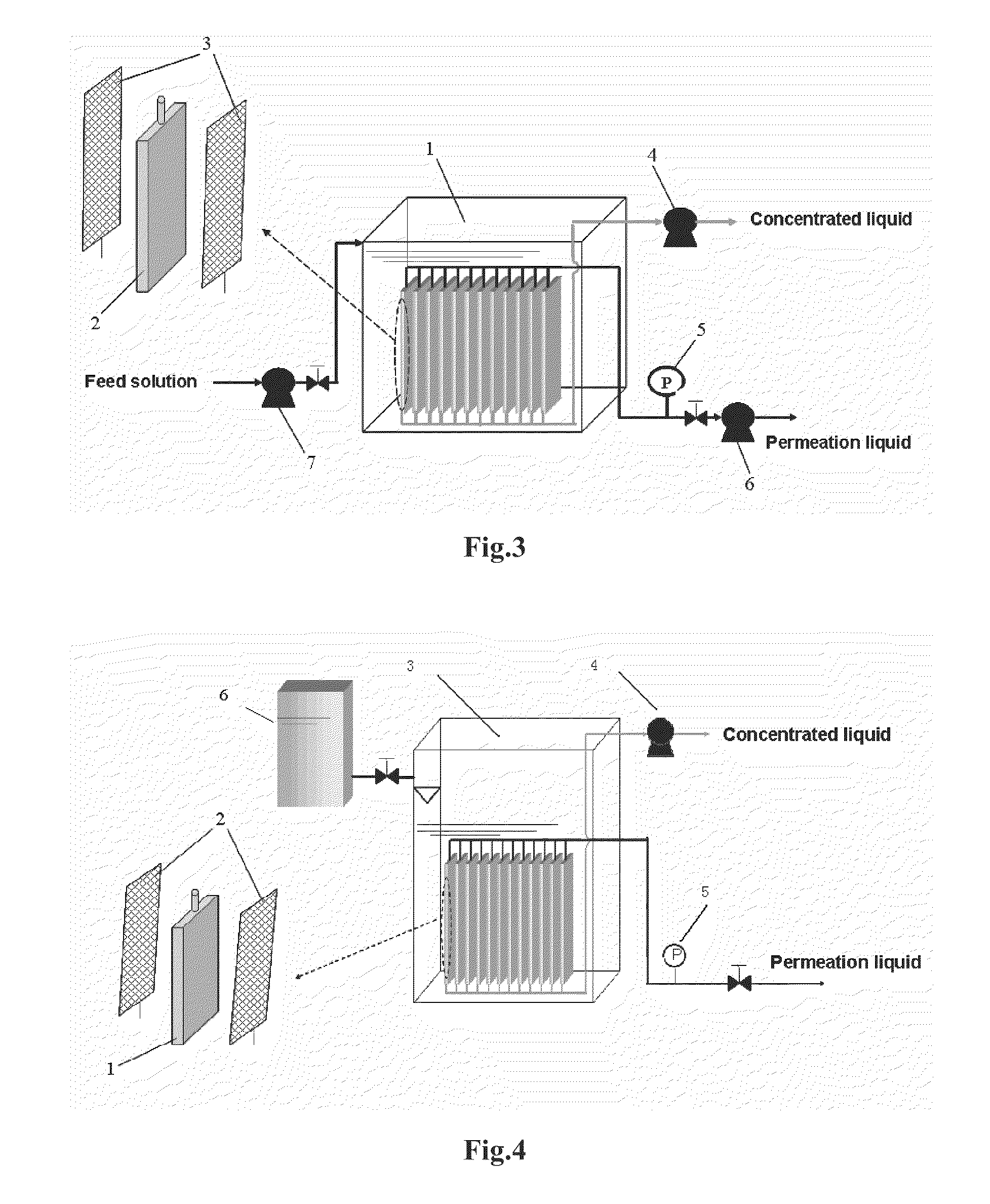Method, equipment and specific drawer for membrane separation utilizing concentration polarization
a concentration polarization and concentration filter technology, applied in the direction of machines/engines, chemical/physical processes, water/sewage treatment by ion exchange, etc., can solve the problems of aggravated membrane fouling, reduced membrane flux, and increased membrane fouling, so as to reduce retention components and enhance filtration efficiency. , the effect of effective control of membrane fouling
- Summary
- Abstract
- Description
- Claims
- Application Information
AI Technical Summary
Benefits of technology
Problems solved by technology
Method used
Image
Examples
example 1
[0101]Turning to FIG. 1, the equipment for a dead-end membrane filtration process of concentrating biomacromolecules and organic micromolecules utilizing concentration polarization comprised: a dead-end filtration cell 3, a filtration membrane 2, a drawer 1 for drawing a concentrated liquid, a pressure sensor 4, a feeding pump 5, and an injection pump or constant flow pump 6.
[0102]The dead-end filtration cell 3 had an effective membrane area of 4.45 cm2 and a volume of 6.7 mL. The tabular filtration membrane 2 was located on the bottom of the dead-end filtration cell, wherein the filtration membrane was Ultracel PL ultrafiltration membrane of regenerated cellulose with a molecular weight cut-off of 10 KD and a high recovery rate (Millipore Company). The drawer 1 made of a hollow plastic or silicone pipe having an external diameter ranging from 0.5 to 1.5 mm was configured on the filtration membrane surface, wherein one end of said drawer extended outside the dead-end filtration cell...
example 2
[0105]The method and equipment used were the same as those in Example 1, while the concentration of BSA in a feed solution (Cf) was 0.5 g / L and the permeation flux (Jv) of the filtration membrane was 3.745×10−6 m3 / (m2·s). When the TMP increased to 100 KPa and 150 KPa, the concentrated liquid was drawn at a drawing rate of 360 μL / h and 420 μL / h, respectively. At the initial stage of drawing, the TMP under both experimental conditions decreased, and then it could be stabilized at 60 and 107 KPa for a long period of time, respectively, suggesting that membrane fouling was effectively controlled during concentration process and the concentration operation could be stably conducted for a long period of time. After operation for 8 hours, the average concentrations of BSA in the concentrated liquids obtained by drawing were 8.9 and 7.0 g / l, i.e., 17.8 and 14.0 times as that in the feed, respectively.
example 3
[0106]The method and equipment used were the same as those in Example 1, while the concentration of BSA in a feed solution (Cf) was 0.5 g / L and the permeation flux (Jv) of the filtration membrane was 3.745×10−6 m3 / (m2·s). In order to obtain a concentrated liquid with a higher concentration, an intermittent drawing mode was used to draw the concentrated liquid. The drawing operation started up at a TMP of 100 and 150 KPa and a drawing rate of 360 μL / h and 420 μL / h, respectively. Such operation stopped when the TMP decreased to 60 and 107 KPa respectively. When the TMP again reached the values for initiating the drawing, the concentrated liquid was drawn at the same rates again. The above operations were conducted repeatedly. After operation for 8 hours, the concentrations of BSA in the concentrated liquid obtained by the drawing were 11.8 and 12.4 g / l, i.e., 23.6 and 24.8 times as that in the feed, respectively. Clearly, the multiple intermittent drawing operation mode facilitates th...
PUM
| Property | Measurement | Unit |
|---|---|---|
| size | aaaaa | aaaaa |
| size | aaaaa | aaaaa |
| size | aaaaa | aaaaa |
Abstract
Description
Claims
Application Information
 Login to View More
Login to View More - R&D
- Intellectual Property
- Life Sciences
- Materials
- Tech Scout
- Unparalleled Data Quality
- Higher Quality Content
- 60% Fewer Hallucinations
Browse by: Latest US Patents, China's latest patents, Technical Efficacy Thesaurus, Application Domain, Technology Topic, Popular Technical Reports.
© 2025 PatSnap. All rights reserved.Legal|Privacy policy|Modern Slavery Act Transparency Statement|Sitemap|About US| Contact US: help@patsnap.com



